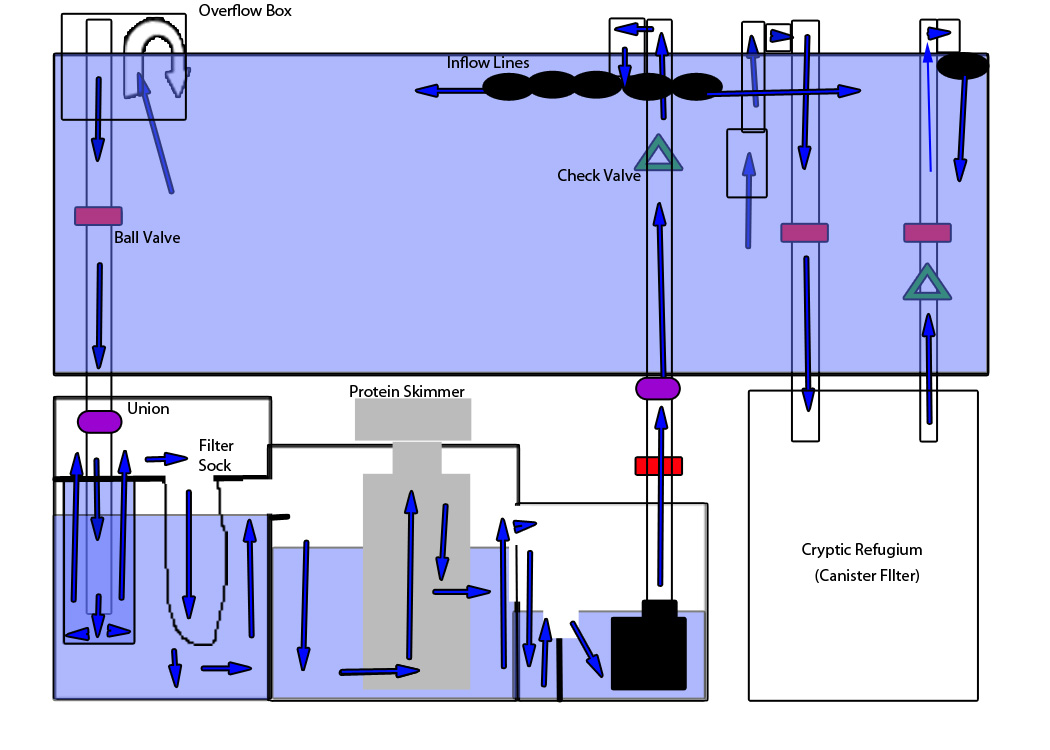 |
| My Halloween costume circa 2006. |
One of my first jobs ever was installing septic systems - both new and old. Pretty shitty, all pun intended.
The best summary of what I learned from that job would be: "Shit rolls down hill."
This basic principle holds true for plumbing aquariums as well as septic tanks. However, one thing I did not learn too much about, while on the clock, concerns siphoning. If you already understand siphoning skip ahead 4 paragraphs. If not, let me share some knowledge.
A siphon is essentially a U-shaped tube that allows liquid to flow "uphill" without use of a pump. The force is generated by the falling of the liquid, as gravity pulls it from a higher reservoir to a lower one. A siphon is formed by creating a vacuum in the tube to start the liquid flowing.
A siphon will continue to flow until one of the following happens:
- the liquids in both containers reach an equal level,
- air enters the system and breaks the vacuum (by either an empty container or the liquid level going below the depth of the siphon tube,
- and/or the use of a mechanical blockage in the form of a check valve.
Siphoning is one of the basics that you need to understand in order to develop your plumbing design. Now we know - and remember "knowledge is power."
Note that I am a Photoshop beginner so forgive the following amateur schematic of the flow/plumbing design of my aquarium. Remember, nothing is to scale and this is as artsy as I get.
This may look complicated, but truthfully it's not too bad. The arrows represent the flow of water. There are two outflows from the tank - one into the Cryptic Refugium and one into the Sump. There are two returns/inflows - one from each area.
Let's go through each of the lines independently.
- The Sump Line
- Water leaves the Display Tank (DT) via a siphon in the overflow box.
- The water flows down the line - past a ball valve and a union.
- The ball valve uses a ball to change the diameter of the pipe to adjust flow rates
- A union is used to connect two pieces of pipe - in my case it is to allow ease of removal of specific parts.
- It flows over a spill tube into a filter sock and into the first chamber of the sump.
- The water flows into the second chamber containing the protein skimmer (more about protein skimmers in another post).
- From the skimmer, the water flows over a baffle to remove micro bubbles and into the third chamber, which contains the return pump.
- The pump returns the water through a line that contains an additional union and a ball valve as well as a check valve.
- The check valve restricts the flow of water to only one direction - this way if the pump turns off, an unwanted siphon does not occur.
- From here the line splits in two and returns the water from the sump into two different areas of the DT.
- The Cryptic Refugium Line
- Water leaves the DT via a siphon
- Passes through a line that contains a ball valve
- It is returned via a pump in the canister
- Passes through a line that contains a ball valve and a check valve
Now for some actual images:
 |
| First you have to Prime it.... Prime it... Prime it.. |
 |
| Then you have to glue it... |
The water is in my tank and the plumbing is holding up - we are almost there. Once the rock and sand cure - It is time for a fish or two. Wooohooo!
Before the fish though, look forward to a follow up on the cure, a discussion on a protein skimmer, and a cryptic/benthic refugium. For now I have to go save the Princess before my stereotypical, red clad, egotistical brother gets all the credit. If you see Yoshi tell him he owes me $10.
Ciao






No comments:
Post a Comment